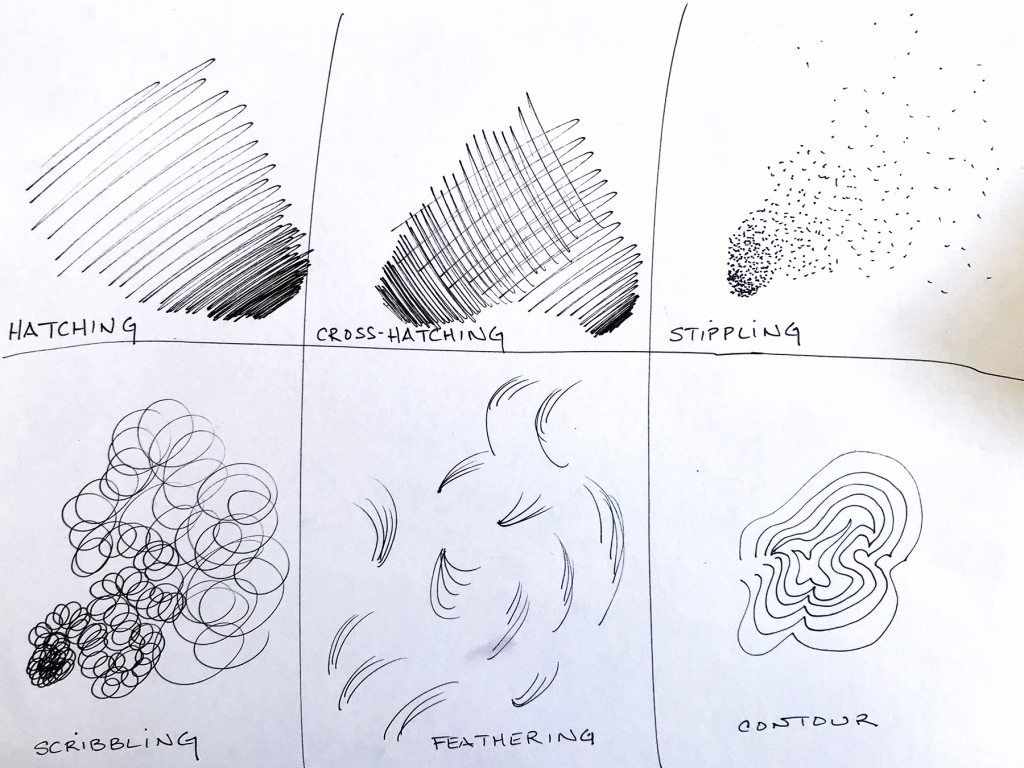Description of the Unit –
Students will first practice a variety of line drawing, or mark-making, techniques, and then use those techniques to render a landscape or still life in pen.
Activity statement –
Using photographs as a starting point, the objective of this lesson was for students to express changes in perspective, texture and value (light and dark) in a realistic drawing using a variety of lines, such as stippling, hatching, and cross-hatching, as well as varying the lines’ density. In this way they can transform a pen drawing into a realistic representation of a scene in nature. To help in this objective, students first created a mark-making chart expressing different types of lines, and discussed how the different types of lines could be used to represent texture, perspective and value.

Goals –
Students should…
Understand: How the use of different lines helps express dimension, texture and light/dark qualities in realistic drawing
Know: How to produce a basic variety of lines
Be able to: Identify (name) a basic sampling of different kinds of lines used in drawing, and to apply them thoughtfully to a realistic drawing

Objectives –
Students will: Thoughtfully produce a realistic drawing that employs basic line drawing techniques
Resources and materials –
- A student-produced mark-making chart
- Drawing pens (in this case I did not have access to different pen nib sizes, but if you do, you may also want to talk about how to thoughtfully use those)
- Drawing paper
- Photographs for reference (I like to use landscape and animal postcards)


Questions –
- What might you use hatching or cross-hatching to represent?
- What might you be able to represent with scribbling?
- When might you want to use stippling?
- Under what circumstances would you use contour lines?
- What kind of lines would you use to represent the texture of tree bark? Of grass? Of rippling water?
- How might you express the shadows on an apple?
Evaluation –
Did students:
- Properly identify different mark-making techniques?
- Understand how to apply those techniques to create a realistic rendering?
- Attempt to express dimension, value and texture with a variety of lines?
- Did students clearly articulate their choices?
Informal:
- Group discussions
- One finished piece



